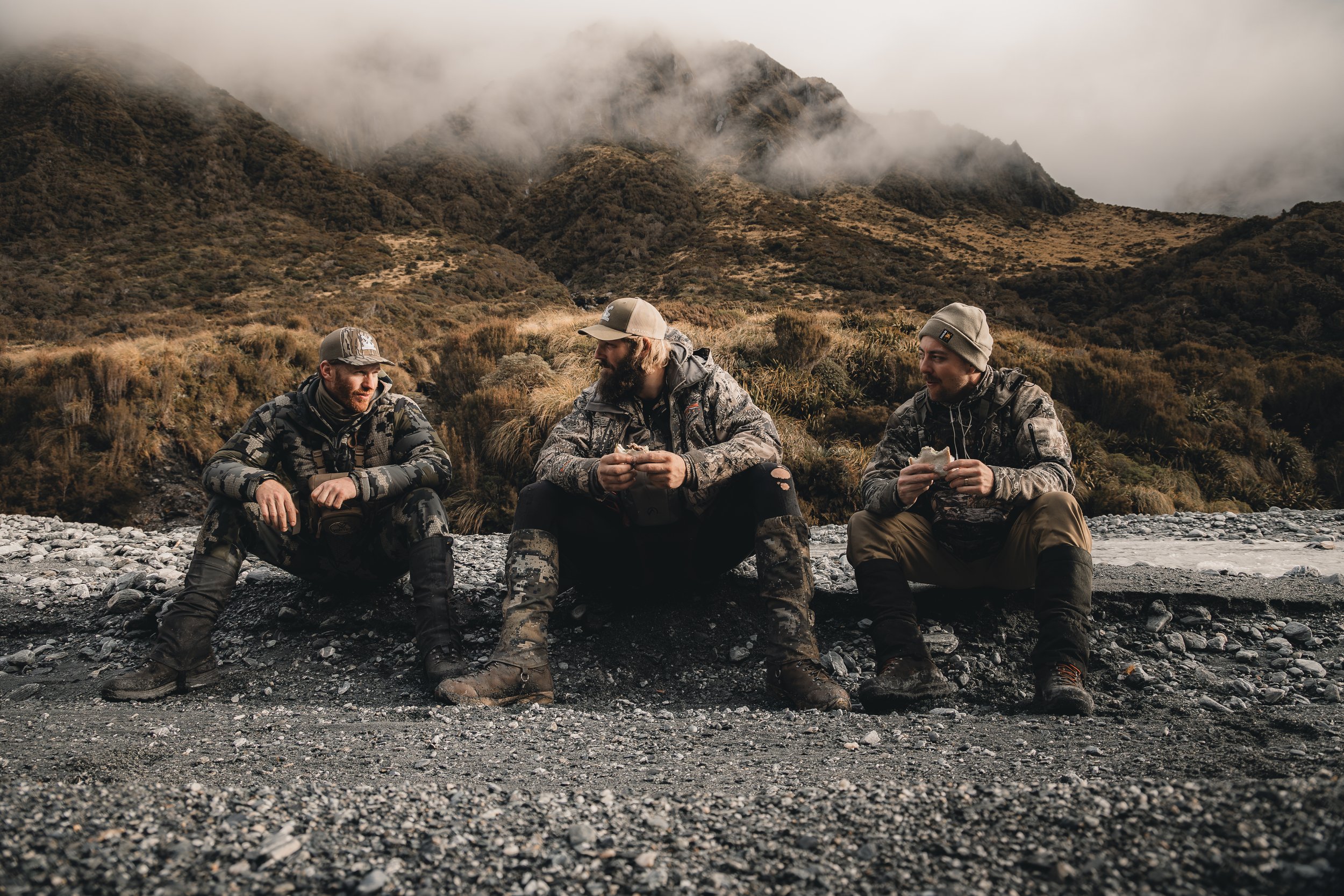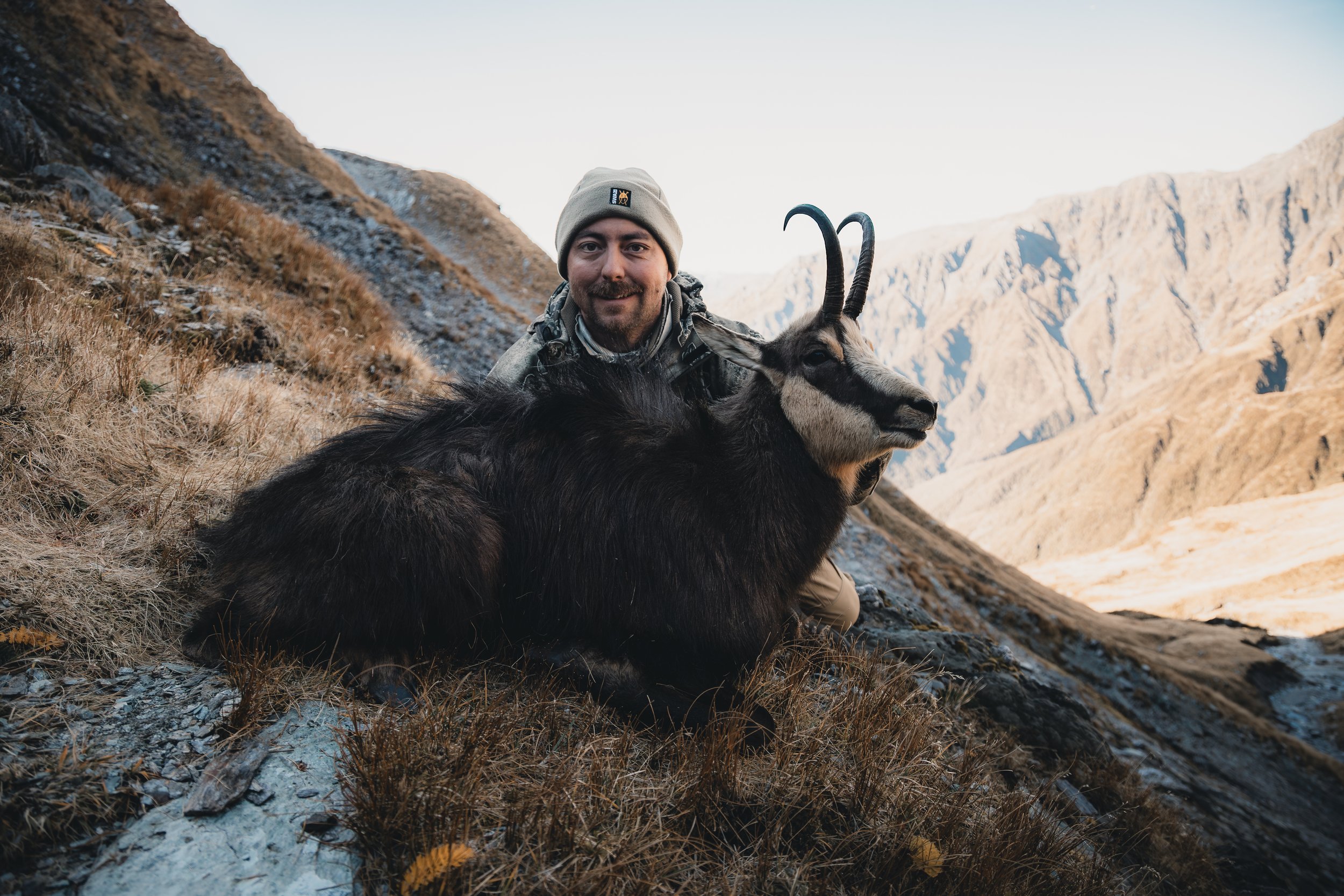New Zealand | Doesn’t Disappoint
New Zealand as a hunting destination has always amazed me, I can't believe it took me so long to visit the land of the long white cloud. Early in June 2024, I was fortunate enough to be booked for videography work through an outfitter that operates out of New Zealand for three months of the year. The goal was to capture the essence of what they do in the South Island wilderness of New Zealand. I spent a little over 10 days following Dave & Honor from Southern Ranges Safaris with my camera in hand, learning and absorbing every detail I possibly could.
I would like to share some information that may help with planning a trip or prompt a thought about heading across the ditch.
There are a couple of options to hunt in New Zealand, one is DIY, the other is to book with a guide. Both have their pros and cons. DIY gives you a sense of accomplishment that you have figured out your quarry and put your skills to the test and walked away with new knowledge and memories for a lifetime. Booking with a guide allows peace of mind when it comes to the behind the scenes details of a hunt. DIY will require you to bring all the gear yourself, everything you need. A guide will supply a lot of the items you may not have room for and save you days at the front and at the back of your trip.
Wilderness DOC land hunts are available to both DIY hunters or outfitters. Public land hunting in NZ is amazing. There are DOC huts scattered throughout the island that you can hike into or if you have the budget for a chopper you can fly in. Choppers will save you time and energy but they are expensive. You will need to budget for around $2500 per hour charged for fly time to your spot and back to the hanger. So if it takes you 45 minutes to get to a hut the invoice will be for 1.5 hours. Most choppers will fit four people but will be limited to 400kg total weight, this includes body weight & gear. From my experience, three people plus gear is the magic number to share costs and weight restrictions. You will need soft bags not suitcases. Some huts don’t have a fireplace so be prepared with decent gear and clothing and a plan for a potentially a heat source if you need to dry anything out. They can be booked and used by anyone, not only hunters so there is a possibility that the beds will be full when you arrive. If you’re hiking in, I would recommend that you have a backup option for shelter packed.
Weather can restrict chopper flights and hikes into the DOC areas that hold animals. A fall back option is private land hunting. Private land is reasonably stitched up with guides / outfitters but offers an alternative to wilderness hunts.
The mountains of the wilderness areas are steep and treacherous at times. A basic level of navigation skill is required although the chances of getting up and over a ridge to another system is remote. The cliffs bluff out up high so you will likely have a main river to keep you orientated. Fitness should be reasonably high if you want to get the most out of your adventure.
In the early stages of a trip, distance is difficult to judge so a range finder will come in handy, good glass will save you energy and time if you let the bino’s do the work before your legs. A firearm setup that can push out to 400m will increase the likelihood of success. It’s not uncommon to get closer but it’s handy to have the range if you can't close the distance.
Plan for the worst, hope for the best. Attire that is designed with features that will protect you against the elements is a minimum. The temperatures in the mountains can fluctuate greatly when the sun goes down. You need gear that will keep you warm and alive if something unexpected happens. A satellite communication device is a must.
A decent pair of hunting boots will keep you in the hunt longer. Your feet are the most important part of the hunt, it sounds ridiculous but you can’t hunt without them. Keep them dry where possible and if they do get wet plan to dry them as soon as possible. A good tip I picked up while there was to carry four pairs of socks accessible in your pack. When one gets wet (and you aren't expecting to get them wet again) change them for a dry pair, placing the rung out wet pair in your pants pocket to warm up and dry. After an hour or so change the second pair of socks for another dry pair, putting the second wet pair in a pocket to dry out with your body heat. Do this over and over until your boots are reasonably dry. After a few hours the wettest pair in your pocket should be dry enough to wear again.
If hunting in New Zealand is something that you’re thinking about, commit to the adventure sooner rather than later. It's a beautiful place and an amazing experience that will be worth the effort. I cant wait to go back











Clothing List:
Base Layers
Swazi Hoodoo
Swazi Micro Shirt 140gsm
Hunters Element thermal leggings
Mid Layer
Swazi The Hood 280gsm
Outer Layer
Hunters Element puffer jacket
Ridgeline Excape Camo Softshell
Swazi Forest Pants
Stone Glacier De Havilland Pants
Rain Gear
Swazi Kagoule
Swazi Tahr Ultralite Jacket
Swazi Rifleman Ultralite Overpants
Feet
Crispi Nevada Legends
Swazi Ibex Socks
Outfitter
Guides: Honor & Dave










